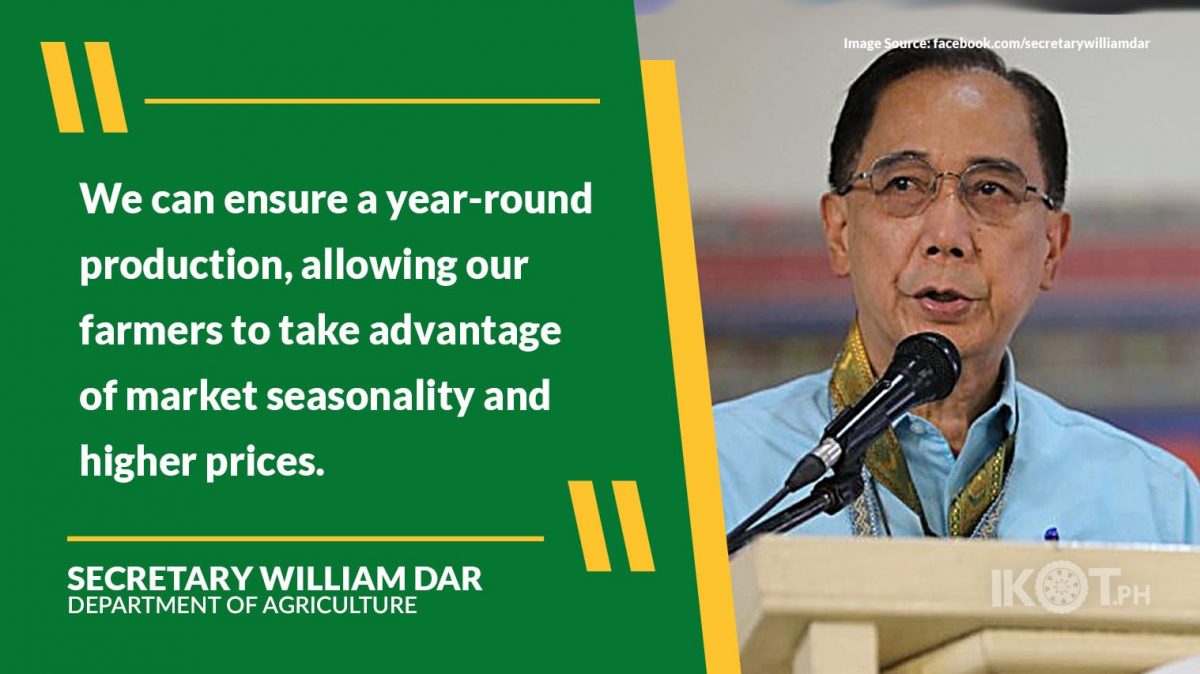For a country frequently visited by typhoons, Filipino farmers could be better off by adopting greenhouse technologies that would enable them to protect and raise crops all year-round.
“This is similar to what other countries and progressive farmer-entrepreneurs have been doing, and we want to encourage more farmers through their cooperatives and associations to put up greenhouse facilities,” said Agriculture Secretary William Dar.
“They would earn more income, particularly during rainy or off-season.”
“With greenhouses, farmers — including entrepreneurs and hobbyists — could produce more crops year-round that are protected from adverse weather conditions. Subsequently, they would earn more income, particularly during rainy or off-season,” Dar stressed.
“Natural hazard is nothing new, especially for us in the Philippines that is visited by an average of at least 20 typhoons in a year. We need to work together in building a strong, resilient agriculture sector to withstand the adverse effects of natural disasters. There are technology options like protected cultivation including greenhouse farming,” the agriculture chief explained.
“Protected agriculture or simply, the cultivation of crops in greenhouses allows our farmers to grow their crops on small plots overcoming not just adverse weather conditions but also seasonality, water scarcity, and pest infestation,” the agriculture head added.
He said that the technology is not new since protected cultivation started in the late 1980s.
“But we have not up-scaled this technology, enough to sustain our food production and make the sector resilient. One advantage of this technology is that we can ensure year-round production, allowing our farmers to take advantage of market seasonality and higher prices,” Dar stressed.
These protective structures can be in the form of 1) low-cost, simple structures using plastic coverings with frames made from wood and bamboo, and galvanized iron pipes; or 2) commercial, permanent greenhouses made from glass or plastic coverings with metal frames.
Another technology option that DA is promoting in a big way to bring in additional supply for the various markets all over the country, is urban agriculture through rooftop gardening.
“We encourage residents and building owners to turn their rooftops and available spaces into vegetable gardens that could provide our families a steady supply of fresh, nutritious, and affordable food.”
“This is part of our continuing efforts to promote urban agriculture amid the pandemic. We encourage residents and building owners to turn their rooftops and available spaces into vegetable gardens that could provide our families a steady supply of fresh, nutritious, and affordable food,” he added.
Rooftops covered with vegetable gardens are now a common sight in many cities around the world. Private companies are starting to invest in green roofs, due to its wide-range benefits both for food security and environment concerns.
In December 2021, a strong typhoon destroyed more than P13 billion-worth of crops in the Visayas and Mindanao.
In response, DA released a total of P3 billion-worth of agricultural interventions to affected farmers and fishers in affected regions.
“The effects of climate change, along with the destruction caused by natural disasters, make it more difficult to ensure food security along with the ever-growing population. Through the upscaling of these technologies, we are addressing food supply brought about not just by natural disasters but still with the looming COVID-19 pandemic,” Dar concluded.


